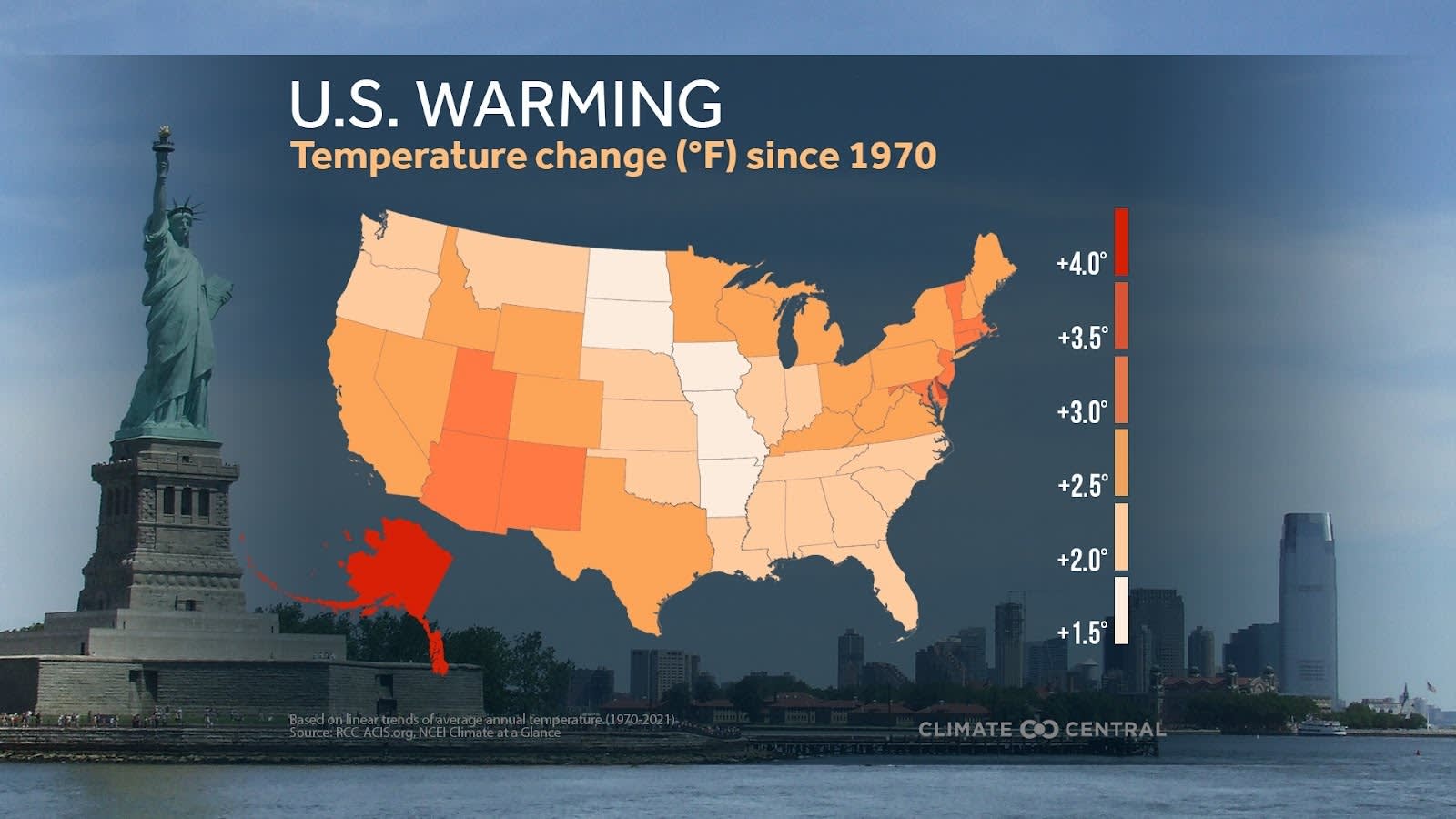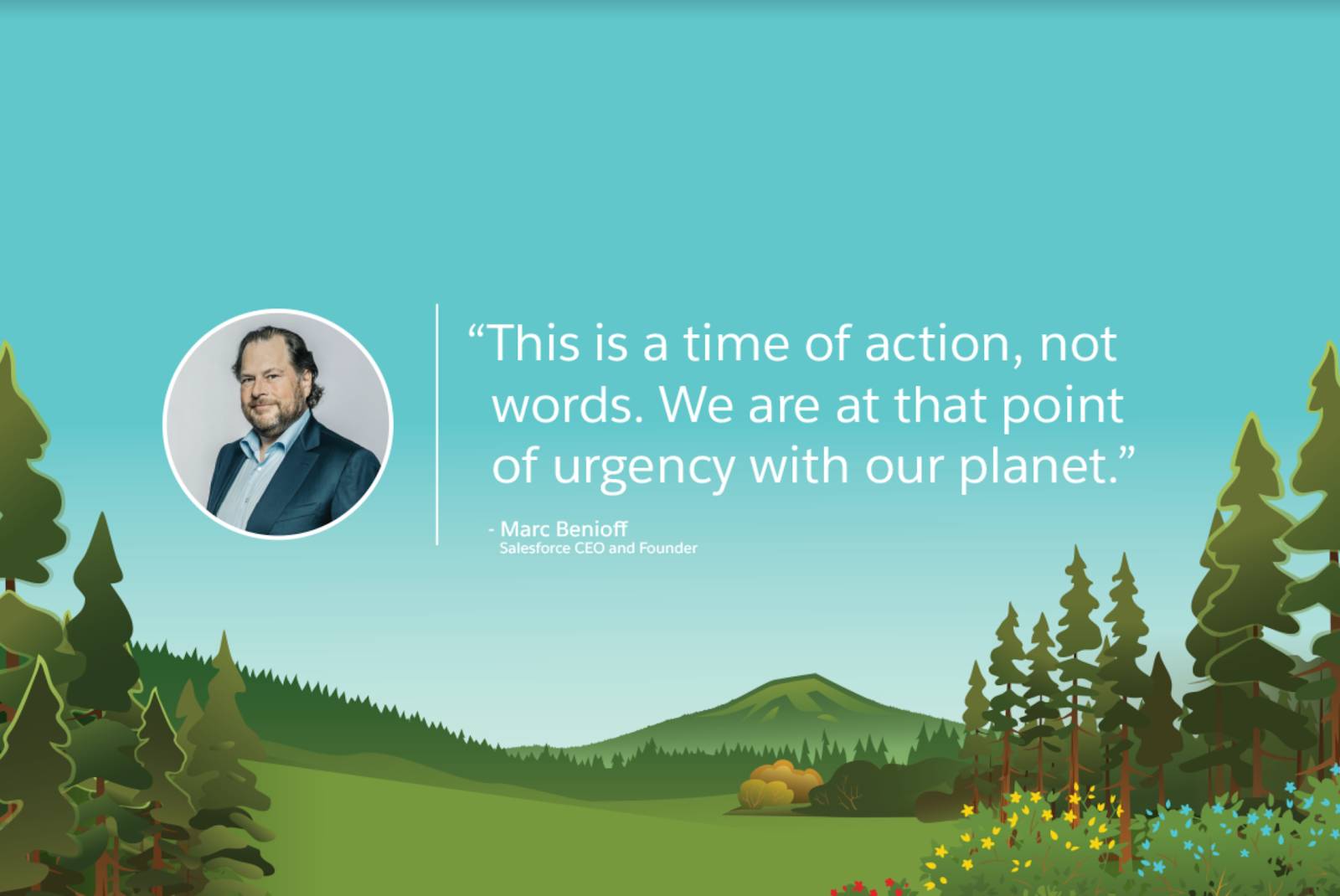Understand Why Trees Matter
Learning Objectives
After completing this unit, you’ll be able to:
- Describe how trees play a key role in addressing climate change.
- Explain how trees benefit human health and equality.
Why Climate Change Is An Immediate Threat
Climate change isn’t a distant threat. The planet is changing dramatically and quickly—and according to almost every major credible scientific agency, human activity is the main driver.
The climate emergency stems from the buildup of greenhouse gases, mainly carbon dioxide, in the atmosphere. These gases trap heat, like a blanket wrapping the Earth, raising global temperatures. This is referred to as global warming. The climate science community stresses that without significant progress in reducing greenhouse gas emissions, global temperatures could rise above 1.5° C (2.7° F) within a few decades. This rapid rise in global temperatures will have profound and largely damaging repercussions, as almost every species and ecosystem is temperature sensitive over time. Think of your own body. If you have a fever and your temperature goes from 37°C to 38.5° C (98.7° F to 101.4° F), how do you feel?
(Learn more about the urgency around 1.5° C by exploring the Resources section at the end of this unit.)

© Climate Central
This is the hottest decade on record. Glaciers and ice are melting at alarming rates, oceans are warming faster and becoming more acidic and anoxic (deficient in oxygen). Unprecedented massive fires are raging from the Amazon to California to Australia. Health, food and water supplies, and economic growth are at risk. And climate change disproportionately affects the most disadvantaged and vulnerable populations, exacerbating existing economic and racial inequalities.
Solutions to combat climate change exist. These solutions include a portfolio of actions to reduce emissions from sources like fossil fuels, paired with efforts to protect and restore carbon sinks like forests and oceans, which are nature-based solutions that lower carbon dioxide levels in the atmosphere.
Trees play an important role in creating and preserving the healthy ecosystems we need for sustainable development, such as access to clean water, reduction in poverty and maintaining global biodiversity.
Why Trees Are Part of the Solution
Trees act as a “carbon sink,” which is the ability to absorb carbon dioxide. Trees absorb carbon dioxide from the atmosphere during the process of photosynthesis. In case it’s been a while since you were in science class, let’s review the basics of photosynthesis: Trees use the energy of sunlight, water, and nutrients from the soil, while extracting carbon dioxide from the air, and convert this into living plant tissue above the ground (also referred to as carbon-dense biomass). In this chemical process, trees release oxygen into the air. In addition, trees help the soil store carbon in organic matter like debris and decaying plant material.
Here are a few facts about the hard work that trees do:
- Old-growth and regenerating forests absorb ~2 gigatonnes of carbon (GtC) annually, which is about ⅓ of all annual fossil fuel emissions.
- U.S. forests and forest products currently capture almost 15% of the nation’s carbon dioxide emissions that result from burning fossil fuels.
- On average, 0.84 metric tonnes of carbon dioxide/acre/year is sequestered annually by one acre of average U.S. forest which is the equivalent of driving about 2,000 miles in a gas powered vehicle.
- Forest products, which include materials derived from a forest for commercial and personal use such as lumber, paper, and firewood, store more than 300 million metric tons of carbon dioxide a year.
(Learn more about Carbon Sinks in the Resources.)
Trees provide additional benefits every day by providing shade, blocking wind, improving biodiversity, purifying our air, preventing soil erosion, cleaning our water, and adding natural beauty to our homes and communities. Without forests, life would cease to exist—forests are intimately entwined with the world’s human and environmental systems. However, since the dawn of human civilization, nearly half the world’s forests have been cleared or degraded, largely for agriculture and road construction. Today, of the approximately 6 trillion trees that once covered half the earth’s landmass, only 3 trillion remain, and 15 billion more trees are lost annually.
With deforestation continuing at an alarming rate, the health of remaining forests is declining rapidly and comes with a high rate of forest biodiversity loss. The UN’s Report on Biodiversity estimates that as many as 1 million plant and animal species are currently threatened by extinction—that’s nearly 11.5% of the estimated 8.7 million global species. The number-one cause of species loss is land-use change and deforestation, the second is direct exploitation of species, and the third (and fastest growing impact) is climate change. (Read the Global Biodiversity report in the Resources.)

What If We Could Reverse Forest Loss?
It’s estimated that nature-based solutions, such as reforestation, could provide up to one-third of the cost-effective climate solutions by 2030 needed to meet the 1.5° C goal. Nature-based solutions can also provide massive human health, economic, and biodiversity benefits:
- Forests contribute to the health and well-being of people. In the U.S. alone, trees absorb 17.4 million tons of air pollutants, preventing 670,000 cases of asthma and other acute respiratory symptoms annually.
- Forests in and along coastal ecosystems, such as mangroves, provide nurseries for marine life, and help store carbon that would otherwise contribute to ocean acidification.
- Risks from extreme weather events, like landslides and floods, are diminished by forests.
- By one estimate, restoring 350 million hectares of degraded and deforested lands around the world would create up to $110 billion annually in net benefits. Poor rural communities in particular would benefit, helping to alleviate poverty. The wider benefits include social and environmental gains in water and food security, biodiversity conservation, and climate protection that help us all.
- Restoring healthy forests creates jobs. A recent World Economic Forum (WEF) report revealed that sustainable management of forests globally would create $230 billion in business opportunities and 16 million jobs worldwide by 2030.
- Trees filter precipitation to purify ground and surface water. The Amazonian rainforest keeps the air humid for over 3,000 kilometers inland and transpires 20 billion tons of water daily. If its rainforest were lost, the Amazon would become a desert.
All these benefits add up, making it clear investing in trees is one important solution to address climate change. Imagine the possibilities: If you plant a new tree every second, it would take around 11 days to plant 1 million trees. And now imagine the benefits of protecting and restoring those newly planted ecosystems for the long term.
In the next unit, you learn how global organizations are joining forces to plant, restore, and conserve forests in the context of a broader climate change response.
Resources
- External Site: Climate Change: How Do We Know?
- External Site: The Urgency of 1.5 °C
- External Site: Forests and Sustainable Development Goals